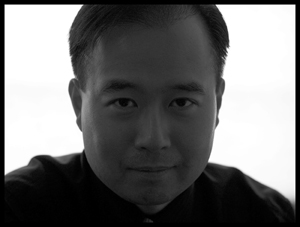More than 70 years
after Pearl Harbor, most Americans still don't know about the involuntary
internment many Japanese Americans endured during World War II. Even fewer know
about the incredible bravery of the Japanese American 100th infantry battalion and
the 442nd infantry regiment. Vincent Yee, former National President of the National
Association of Asian American Professionals (NAAAP) decided to shine a light on
this important part of American history for his debut novel, The Purple Heart.
Below is some of our
conversation about history, the Japanese American experience and what, if
anything, we've learned since World War II.
Why did you choose to write about
the Japanese-American experience during World War II?
It all started out with a dream to write a book and when it came time to choose
a topic, I knew that I wanted to write an Asian American story. I was inspired
by the movie “Saving Private Ryan.” I asked myself what else happened in WWII
and then I remembered the Japanese American internment. As I started to do
research, it was the story of the 442nd
that really inspired me. Despite their families, wives, girlfriends being
imprisoned, when this country asked them to fight against the Nazis, more that
4,500 young Japanese American men volunteered to fight for our country. That
story of patriotism is a lost story in American history that I wanted to tell but
I needed a story concept. That’s when I had an epiphany to tell a story about
love and courage. A girl-meets-boy story, then separated by the war. I had
love, courage, patriotism and through the power of fiction, I knew I had a
concept that could finally tell a story about the sense of hopelessness of the
internment and the vindication of the 442nd.
But just as important, I knew that the Japanese American experience would be a
lesson for the rest of the Asian American community. Because what happened to
the Japanese American community could happen to any other Asian ethnicity in
the U.S., whether that is Chinese, Korean, Vietnamese and so on. One of the
biggest challenges for Asian Americans is to not only be seen as American. That
doesn’t mean White, but it does mean being seen as patriots, and there is no
stronger story of patriotism than the story of the 442nd, the
Japanese regiment that fought in WWII.
Your younger characters are
surprised when they find out what happened to this community. Has it been your
experience that people don’t know about this?
Yes, at the time of researching this story idea, there wasn’t that much
information about the Japanese American experience on the Internet. I came
across a number of personal websites, put together by a number of Yonsei, 4th
generation Japanese Americans, who lamented that they only recently found out
about their great and grandparent’s experience during WWII. There were a number
of non-fiction books out there and the movies that touched on the internment
simply didn’t do the justice that the Japanese American community deserved.
This furthered my desire to write this story.
Some of the reasons that were given to me as to why these stories of the Issei
and the Nisei, the first and second generation Japanese Americans, were lost
was that they simply bore the shame and resolved to move on with life.
You didn’t just write about
internment; you wrote about the “questioning”, the suspicion, the camps and
also the 442nd. What kind of research did you have to do to in order to be able
to cover all of that?
I spent about a year of research before writing this story. In that
research, I gathered as much information as I could from historical accounts on
Web sites but it was the personal websites with intimate stories that gave a
personal perspective. I watched the limited number of movies that depicted
internment life and the one movie that gave some kind of idea of what the 442nd
went through. I read a number of non-fiction books and also the PBS
documentaries that chronicled the Japanese American experience. Though The Purple Heart is historical fiction,
I needed to get the most important historical facts correct for this fictional
story. When I created the historical timeline, it spanned 4 years and right
then and there, I knew my story project was going to be challenging. That’s
when I chose to write a scene based story rather than a linear story account of
the Japanese American experience. I paired up my most important story scenes
against the actual historical timeline and that created my story’s outline.
Once the outline was ready, I was almost ready to write but I needed something
more than just a good story, I needed a hook that had the potential to be
controversial. And that’s when I had the inspiration to add a bit of mystery
into the book that centered on a hidden family secret surrounding the
grandfather.
One of the bitterest ironies of
this story is that the people we put into internment camps were fighting an
enemy that was putting people into concentration camps. And those soldiers took
incredible risks but weren’t acknowledged until decades later. How did those
people close that psychological circle so they could not only live in their
country but be genuinely patriotic?
From the conversations that I had with a few people who were interned and from
a couple of 442nd veterans, the experience of the internment did have a strong
effect on their community. I don’t want to speak for the Japanese American
community but I’ll share a few thoughts. It created a sense of alienation and
some questioned the value of their own Japanese ancestry. Many of the Japanese
Americans went on to rebuild as best as they could, which was a testament to
their will to move on with their lives. This speaks to our quiet Asian American
resolve to move on with life but in this quiet resolve, those stories were
never told and only recently, with people like George Takei, are stories of the
Japanese American experience coming to light. However, the unfortunate thing is
that the number of Nisei survivors, the 2nd generation, are quietly passing
away at an alarming rate and their unique American story has not been told. The
veterans of the 442nd know that what they did was patriotic, demonstrated by
the blood they shed on the battlefield and remembered by the 9,486 Purple
Hearts their regiment received. They were the most decorated U.S. army regiment
of their size and no one knows this and their story deserves to be told.
After the war, many of the
people who came out of the camps found they couldn’t return to homes that had
been sold while they were gone. How did people rebuild their lives?
I think they unwillingly and unfairly accepted a lot. The trust that
they thought they had in the White neighbors, whom they thought were their friends,
was betrayed when those White neighbors who were supposed to watch over their
property, turned around and sold off their property for profit. The egregious
treatment of the Japanese American community wasn’t recognized by the U.S.
government until decades later and the compensation that was given to the
Japanese American survivors was so small that it had little value in my
opinion. The heroism of the 442nd wasn’t fully acknowledged until early 2000
when the Congressional Medal of Honor was bestowed onto 21 other 442nd
veterans. They were not properly recognized for their battlefield heroism due
to simply a racist double standard at that time. One of the best compliments
that I got for my book was from a 442nd veteran. Since he fought in the war, he
could only see it from his side but after reading my book he said, he could
finally see the entire scope of the internment and what his family went through
and the experiences of the 442nd. That meant a lot to me. When he came back
from the war, he quickly met his wife, took advantage of the G.I. Bill and got
his education and went on to build an academic career and had four children. He
is now a grandfather and enjoys life every single day afforded to him.
The Japanese Americans
didn’t take this lying down. Gordon Hirabayashi brought the case to the Supreme Court- and lost. The decision is really appalling, and it’s never been overturned. What does that say about
us?
In addition to this case, Fred
Korematsu also brought this case to the U.S. Supreme Court. That ruling said
that during a time of war, the U.S. had the right to “intern” a certain group
of people based solely on their ethnicity was never overturned. The Japanese
American internment was the biggest case of racial profiling. I always
postulate that if the majority of U.S. population was Japanese American at the
time, they would never had interned people who looked like them. What these
rulings tell us is that minorities are subject to those people who are in
power. As we still live in a White male dominated society, where power is
centered, unfair laws or policies could be passed based on nothing more than
fear and worst, racism. Another act that unfairly targeted a group of people
was the Chinese
Exclusion Act. We live in an America where equality is still a struggle and
subject to those who wield legislative power.
Along the same lines, when
people start rounding up undocumented Spanish-speaking immigrants and put them
into long-term ICE detention centers, or when people start attacking Muslim
Americans in the streets, it’s terrifying. Didn’t we learn anything?
My simple thought on this is no. The powers that be have simply gotten
smarter about how to target a certain group of people. But that is not to say
that there aren’t people who are hell bent on causing harm to all Americans,
White, Black, Hispanic, Asian and Native Americans. Law enforcement definitely
have the right to do what they can to protect Americans, but not at the expense
of taking away an American’s right to due process under the law. I think one of
the differences here is that in the U.S., yes, we do have a segment of the
population that has created harm to Americans but during WWII, the Japanese
Americans were guilty because they were simply Japanese and that was wrong.
Another tricky part in this thorny discussion is that some of the detained are
not U.S. citizens and thus are not subject to our laws and I think that’s where
my story is important. Of the 120,000 Japanese Americans that were detained,
about 80,000 were born in the U.S. and thus American citizens. But during WWII,
their constitutional rights were too easily suspended by people in power. It’s
even more important now that more Asian Americans get into politics.
As an Asian American writer, what
was it like to have to “go there” and write a story about people who like you
(and me) being so victimized by prejudice?
The unfairness of it all, caused by the prejudice was a given. But
rather than write about the prejudice, I wanted to write a story where the
characters feel it emotional and through those powerful emotions, I wanted the
reader to vicariously feel all those visceral emotions, everything from
unfairness, hopelessness, shame, fear, redemption, strength, courage and
patriotism. From what my readers have told me and the tears that they have
shed, The Purple Heart has done that.
I believe that only through the powerful emotions of the characters, only then
will a reader experience the full emotional toll of the Japanese American
experience.



No comments:
Post a Comment